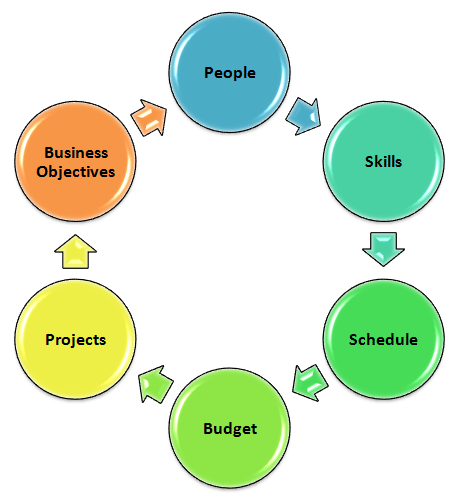As the Software Development Manager, you have many competing priorities. And worse, you have several vistas and horizons you have to manage.

Competing Priorities
The Short Term
The short term – 3 to 6 months – you probably have a good handle on. For most team sizes you can allocate teams, resources, skills to the projects, and the projects are well enough defined that you can manage to milestones.
The Long Term
Your organization also has 3 to 5 year goals too. And those are usually a little vague, open ended, and often include world domination.
The Iffy Bit Inbetween…
Between these two is the middle ground. The 18 month window between short-term now, and long term goals. Every project on that 18 month roadmap must contribute to meeting those long term objectives.  This is the critical area for business success. What projects do you execute on, to actually get you to achieving those 3 to 5 year goals? This is often dubbed the Product Roadmap, or the Technology Strategy, or in some cases, it is the Project Portfolio. In whichever guise, it is the alignment between business and technology that helps the entire organization succeed.
The end result is usually a Roadmap for software development, around which sales and marketing can drive long term planning and positioning.
And in most cases, it is based on wishes, instead of hard numbers.
Sandbagging or OverCommit?
From your perspective as Technology Manager? You are damned if you do, and damned if you don’t! If you under-commit, your business could lose significant business advantage. That’s bad. If it comes home, you will be fired. If you over-commit on the roadmap, you will forever have late projects, be juggling resources and priorities, and you will be fired. Does this sound like you?
So how do you get to a development roadmap you can really stand behind?
You have a constrained resource and skill set; you have marketing and product management pushing for dates when major new software releases will be available that they can position and sell; on the other hand, if you can demonstrate a major initiative coming early for a small additional investment, you may be surprised what your CEO can contribute. Or if you can identify that one specific skillset (QA? Java? .Net?, Design?) is the bottleneck, you now know exactly where to focus those extra dollars.
The problem is that if the roadmap is to be anything other than a wishlist, it has to have some substance. And that has to be done during the development of the roadmap, not after it’s been sold as a wishlist.
pCapacity is The Answer
But what if you could assess your projects in an objective numbers based manner? And then quickly drop them into an 18 month schedule? Drag and drop them onto the schedule where the resource loading permits? Sit down opposite the VP Marketing and decide which projects are “in” and which are “out”? Sit down with the CFO and CEO and do the same around the table on a single page planner, and watch the financial impact of accelerating projects or delaying projects? Of adding a half-million dollars to the budget to achieve goals? Of watching what happens to skillsets when projects are run in parallel? Where are the resource bottlenecks and whats the best way to mitigate them? What’s the cost of offshoring to achieve business goals?
pCapacity is a spreadsheet that simplifies all of the above modeling questions. The problem is complicated. It’s like nailing jello to the wall! But pCapacity makes it so easy to try different scenarios a CEO could use it!
What it delivers is an optimal utilization of skills and resources, to achieve projects at a ‘rough cut’ level. This is Rough Cut Capacity Planning for Software Development. Its so much better than taking a guess, and getting hung out to dry on a roadmap that is fairy dreams and pixie dust.
What’s more, because this spreadsheet is based on fact, as best known to the entire management team, it is a collaborative plan. It is objective, not subjective. Auditable, instead of a guessing game. Its a plan that all the team can buy into with full understanding of the issues.
Could this one spreadsheet help you develop or ratify your development plans?